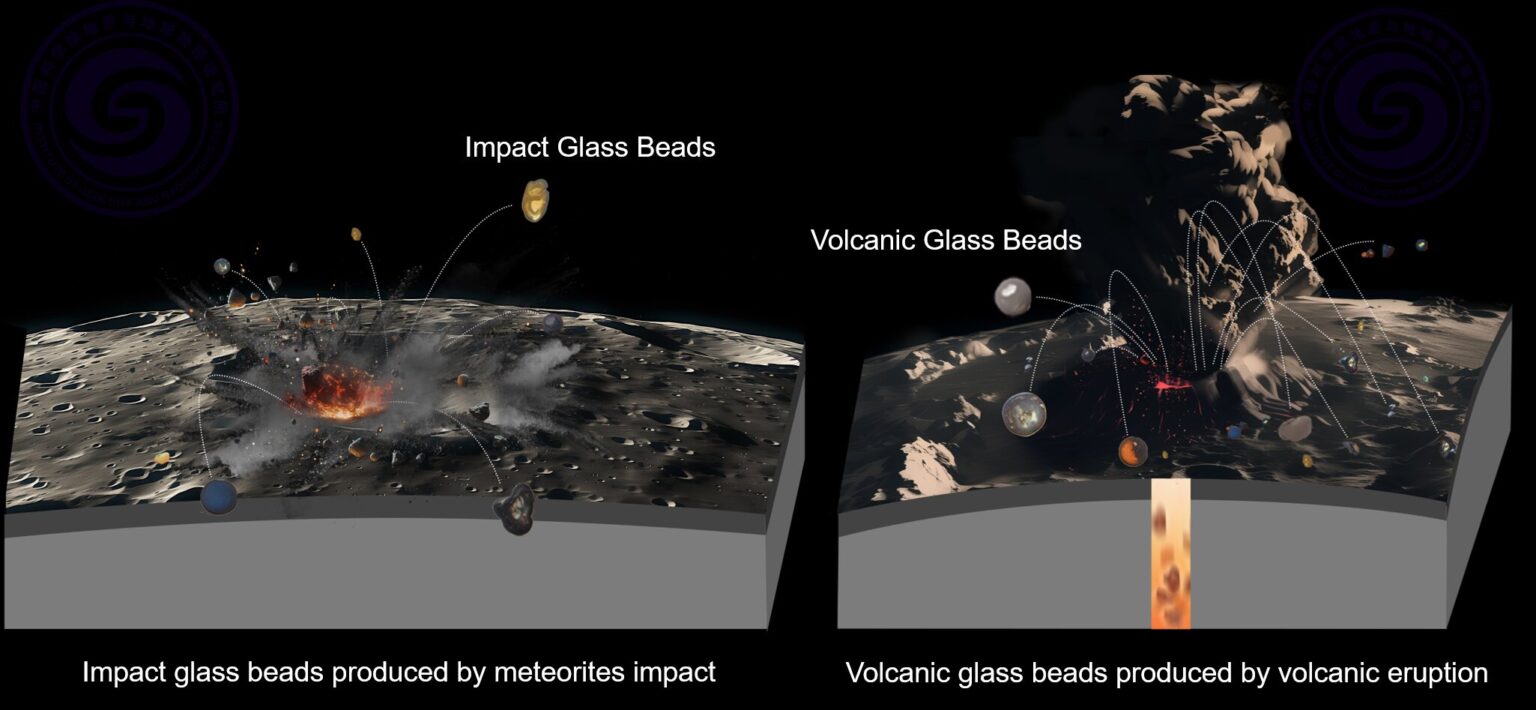Chinese scientists examining samples collected by the Chang’e-5 spacecraft have discovered they have 123 million-year-old volcanic glass beads. This means that the lava eruptions on the surface of our moon lasted much longer than previously thought.

Volcanism on the Moon
Prof. Li Qiuli’s team from the Institute of Geology and Geophysics of the Chinese Academy of Sciences has published another sensational study of samples collected by the Chang’e-5 spacecraft. The paper was done with Nanjing University and Albany State University in New York and focused on lunar volcanism.
Researchers have long known that the landing site of the Chang’e-5 spacecraft is covered with fairly young volcanic rocks. But their exact age is still a matter of debate among scientists. This time, geologists turned their attention to natural glass beads — tiny spheres that were once molten blobs of solidified material that had retained their shape.
Glass beads are formed by many natural processes, such as meteorite impacts. Out of the 3,000 spheres found in the samples collected by Chang’e-5 and examined by scientists, the vast majority are just that.
However, sulfur isotope studies have shown that some of the beads were formed from molten material from the Moon. The strangest thing was that three of them were formed only 123±15 million years ago. This is a really sensational result.
Last time when the moon was covered in liquid magma
While the age of 123 million years may seem huge, it is actually very small compared to previous estimates of when liquid magma was on the Moon’s surface. After all, after studies conducted by several Apollo missions, it was determined that the last time significant volcanic activity occurred on our moon was 2.8-2.9 billion years ago.
However, samples from Chang’e-5 recently showed that the surface of Oceanus Procellarum on which it landed was formed 2 billion years ago. And there are results from remote sensing of some Moon rocks that indicate they are only 800 million years old. It is true that scientists don’t have much confidence in these results.
And finally, we have a new result. And the most important thing in it is not that volcanic activity on the Moon persisted since the time of the dinosaurs. Significantly more interestingly, we may incorrectly estimate the dynamics of our moon’s surface at all. After all, it may still be geologically active.
According to phys.org


